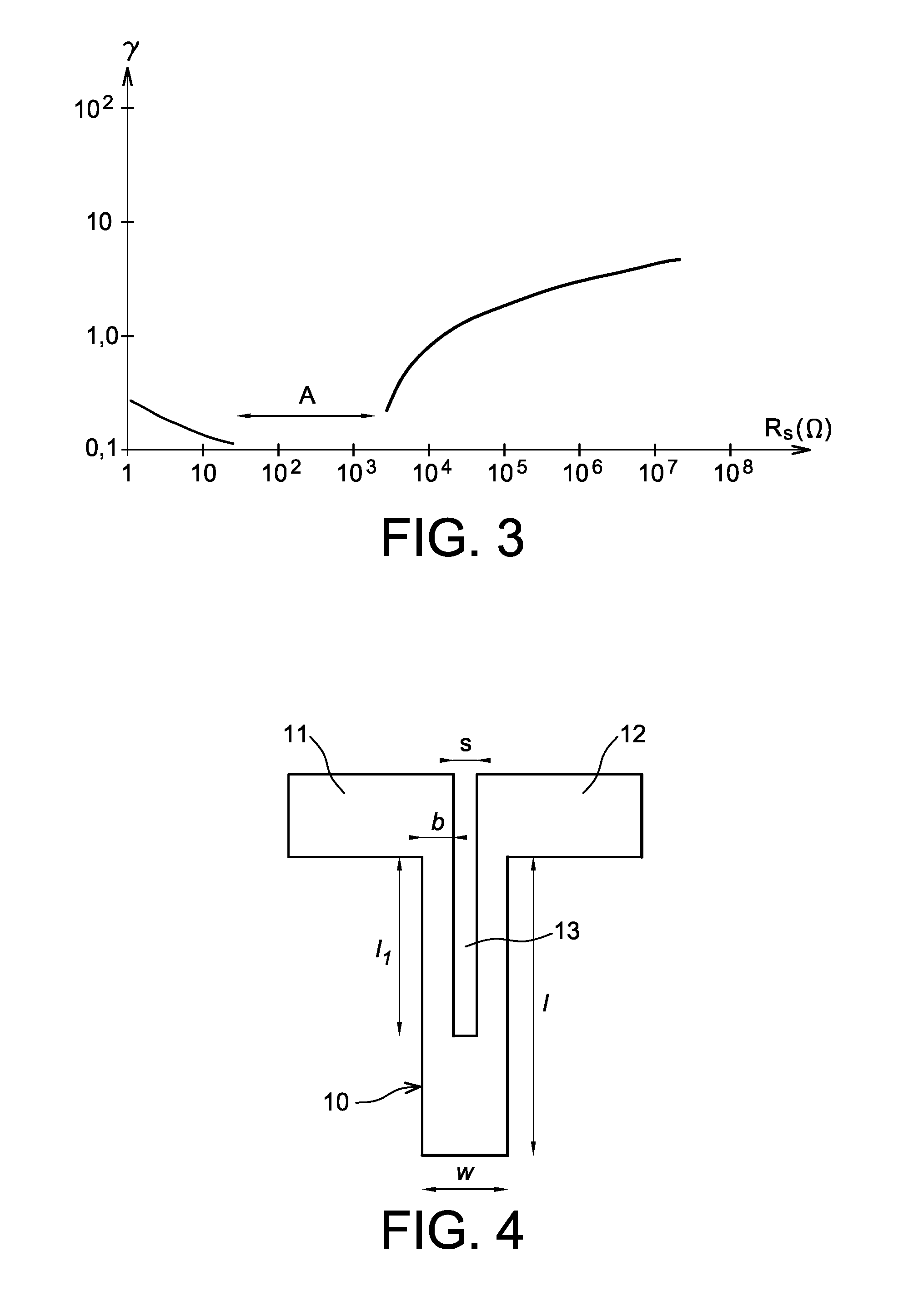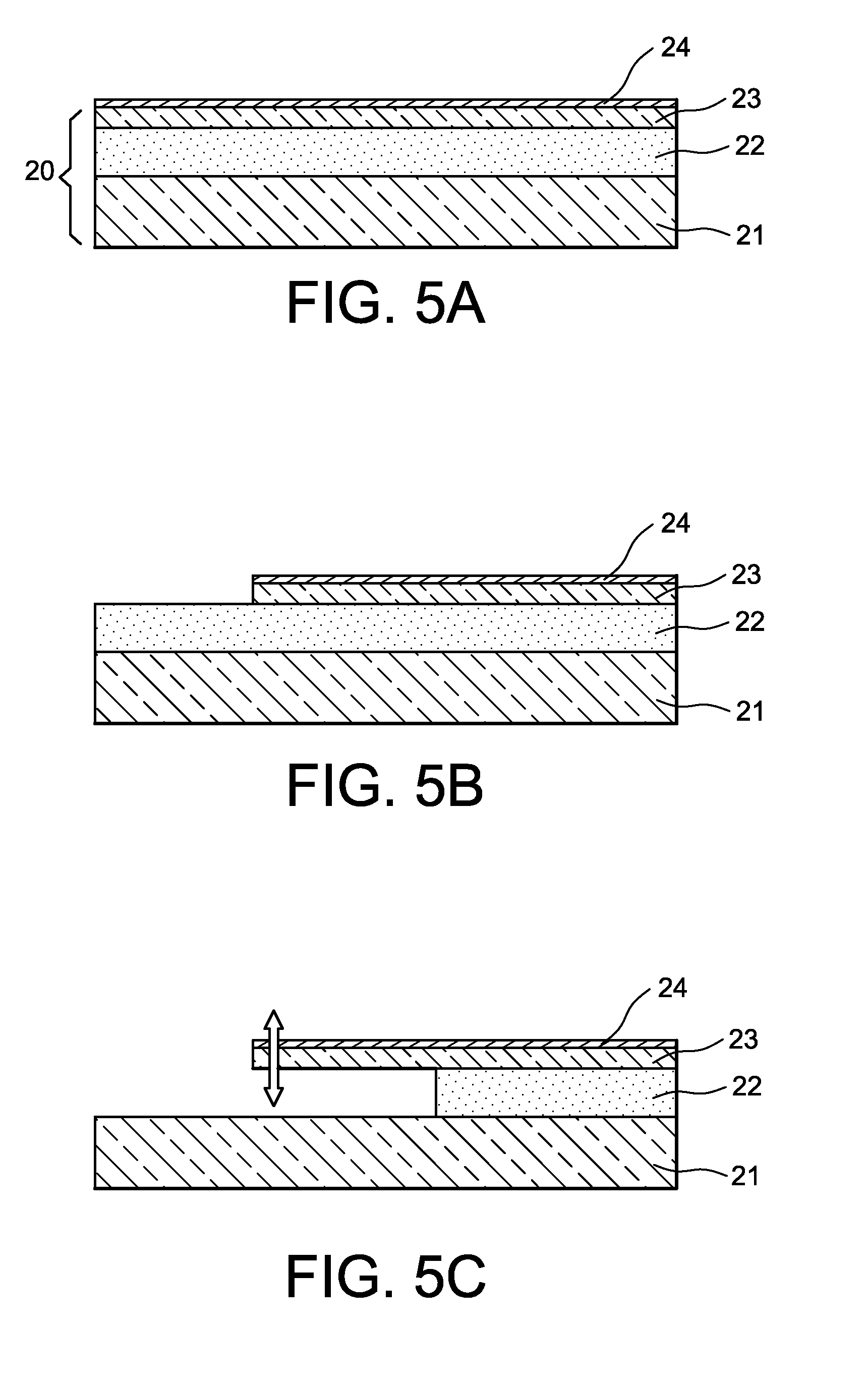NEMS comprising alsi alloy based transduction means
a transducer and alsi alloy technology, applied in the field of nems, can solve the problems of metal contamination, inconvenient measurement, and disadvantageous use of semi-conducting gauges in this application, and achieve the effect of reducing the number of metals in the sample, and improving the accuracy of measuremen
- Summary
- Abstract
- Description
- Claims
- Application Information
AI Technical Summary
Benefits of technology
Problems solved by technology
Method used
Image
Examples
Embodiment Construction
[0023]Like any metal, the gauge factor of an aluminium alloy based material is low and its resistivity is very low. In other words, that signifies that the signal applied to a sensitive component based on aluminium alloy must be very weak to avoid any fusion of the component by fusible effect. Furthermore, the transduction is not very efficient due to its low gauge factor. Since the displacements and the strains in the movable mechanical components of the microsystems are high, all of these arguments incite those skilled in the art to rule out this type of layer to form the sensitive layer.
[0024]For low deformation NEMS applications (compared to its smallest dimension) that cannot in essence accept high powers (thus high voltages), these arguments become prejudices. The sensitivity of a NEMS (particularly its capacity to be sensitive to a mass settling on its surface or to an acceleration) is no longer the major problem (in particular for frequency detection sensors). Consequently, ...
PUM
| Property | Measurement | Unit |
|---|---|---|
| thickness | aaaaa | aaaaa |
| thickness | aaaaa | aaaaa |
| thickness | aaaaa | aaaaa |
Abstract
Description
Claims
Application Information
 Login to View More
Login to View More - R&D
- Intellectual Property
- Life Sciences
- Materials
- Tech Scout
- Unparalleled Data Quality
- Higher Quality Content
- 60% Fewer Hallucinations
Browse by: Latest US Patents, China's latest patents, Technical Efficacy Thesaurus, Application Domain, Technology Topic, Popular Technical Reports.
© 2025 PatSnap. All rights reserved.Legal|Privacy policy|Modern Slavery Act Transparency Statement|Sitemap|About US| Contact US: help@patsnap.com



